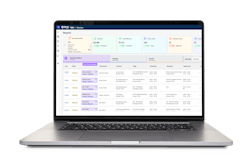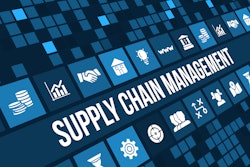
If you work in freight, you know the scenario: a bulk shipment leaves the Texas refinery on time, headed for an Ohio facility by rail. It cleared the terminal. It should’ve reached the yard by now, but no one can say exactly where it is or when it’ll arrive.
The carrier portal says one thing. Your internal system says another. The last reliable update? Buried in an email from three days ago.
This isn’t just a visibility issue. It’s a freight data failure—and it happens all the time.
Freight moves fast, but the data doesn’t. It’s fragmented, delayed, and out of sync. While other industries embrace real-time tech innovations like agentic AI, freight teams are still chasing ETAs through spreadsheets and email chains like it’s 2005 with rare real-time data to make the fast decisions the industry needs.
The industry’s AI transformation is on the horizon, but before AI agents start rerouting freight, it must fix the foundation: the broken data infrastructure behind every shipment.
Here’s what’s holding freight visibility and modernized operations back right now, and what it will take to move forward.
The real reason freight visibility keeps failing
It’s not a lack of tech systems. It’s the fact that those systems don’t work together.
Every handoff, every update, every missed alert reveals the same issue: freight data lives in silos. Across rail, truck, barge, and terminal operations, information is delayed, duplicated, or disappears entirely. And the more complex the journey, the more likely visibility breaks down.
This hits hardest in high-stakes bulk and break-bulk freight, where shipments cross thousands of miles, span multiple modes, and rely on a tangle of disconnected systems. Every handoff multiplies the risk of disruption, and the gaps get wider with every leg.
It’s easier to track a $12 online order than a $150,000 shipment of industrial materials. That’s not just frustrating—it’s risky, and three core challenges drive the problem:
- Disconnected systems across modes: Each mode runs on its own tech stack. A single shipment might pass through five or more platforms—none of which speak the same language or update on the same timeline. This means status updates fall out of sync. Key events go unrecorded, and there’s no shared view of what’s happening in real time—only fragmented details someone has to stitch together manually. No one has the full picture, and everyone is left guessing.
- Inconsistent standards and status definitions: Even when data exists, it often contradicts itself. One system marks a load as "available for pickup," while another shows it as "in yard." Timestamps vary. Status codes differ. Event definitions are vague or outdated. In other words, visibility becomes a matter of interpretation rather than truth.
- Outdated tools and manual workarounds: Spreadsheets, emails, and phone calls are still the glue holding multimodal shipments together. Every copy/paste, call log, and manual update adds friction and delays. Instead of orchestrating operations, supply chain pros are stuck doing detective work, and human talent is wasted chasing basic facts.
Together, these three breakdowns form what many now call “supply chain data graveyards,” handoff points where vital information disappears just when it’s needed most.
Only 6% of companies report full visibility, yet freight still moves. Why? Because supply chain professionals have learned to manually stitch together the story by cross-referencing portals, forwarding emails, and calling carriers for clarity.
But this isn’t sustainable or the foundation for an AI-future. Until freight data moves in sync, visibility will always be a step behind, and the freight industry's biggest tech transformations will be left behind.
From tracking to foresight: The shift to predictive visibility
The problem isn’t about knowing where freight is. It’s knowing what’s going to happen next and being ready to act.
Modern supply chain professionals need foresight: Will the shipment arrive on time? What happens if it doesn’t? What can I do about it right now?
Answering those questions requires more than GPS pings. It demands a shift from reactive tracking to predictive intelligence. That means:
● Consolidated, cross-modal views: A single source of truth across truck, rail, barge, terminals, and inventory.
● Standardized data formats: Shared definitions and event codes across all systems and partners.
● Contextual insights: Not just where a shipment is, but why it's delayed, how long it’s been dwelling, and what that means for downstream operations.
When freight data is structured, aligned, and accessible, it’s not a shipment update—it’s freight intelligence. With this foundation in place, logistics teams can spot issues early before they cascade, focus only on exceptions that matter, and coordinate in real time across stakeholders.
For instance, when a weather delay hits a rail segment, predictive systems don’t just observe. They empower teams to act: reassigning trucks, updating ETAs, shifting inventory, and keeping operations on track.
That’s not just better visibility. That’s operational intelligence.
Visibility first. Intelligence next.
Fixing fragmentation isn’t just a technical issue or an IT upgrade. It’s a business imperative.
Disconnected data is holding back the people who keep freight moving. They need unified, real-time information, so they can stop patching problems and start driving performance.
Agentic AI is coming, but it won’t work in the dark. You can’t optimize what you can’t see. You can’t automate what you can’t trust, and you can’t make smart decisions with three-day-old data buried in an email.
Before the industry sees self-optimizing systems that reroute freight, resolve exceptions, and rebalance networks, it needs clean, connected, and timely data. Without it, even the smartest algorithms fail. Predictive engines stall. Automation misfires. AI agents optimize for the wrong outcomes—or none at all.
Companies pouring money into AI while ignoring data fragmentation are building castles on quicksand. Visibility comes first. Intelligence comes next — and it all starts with fixing the foundation.


















